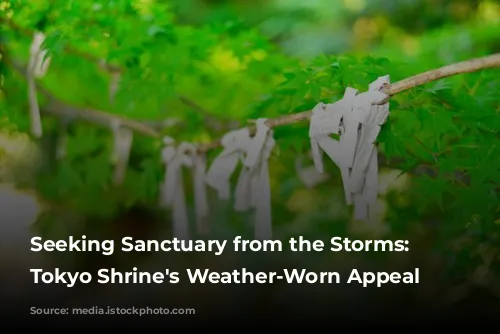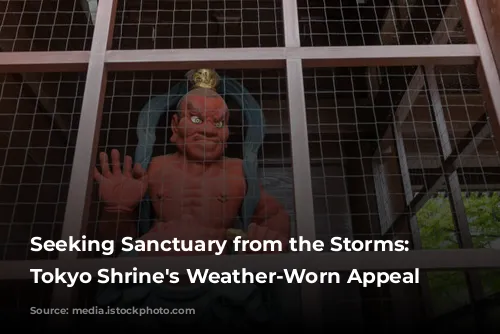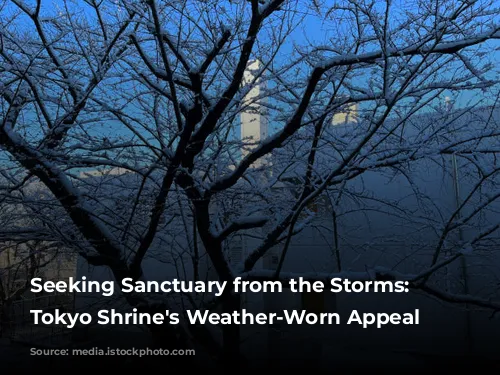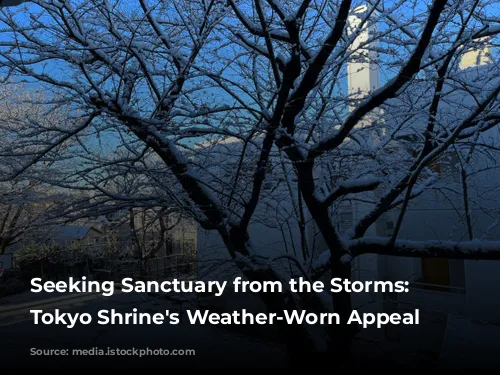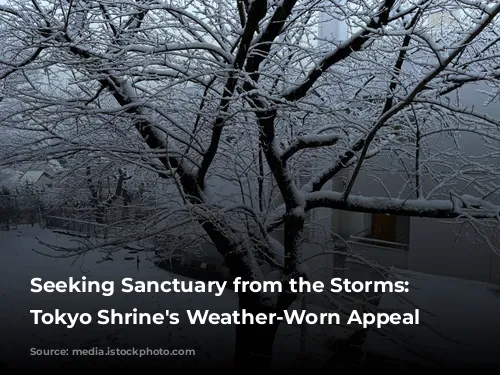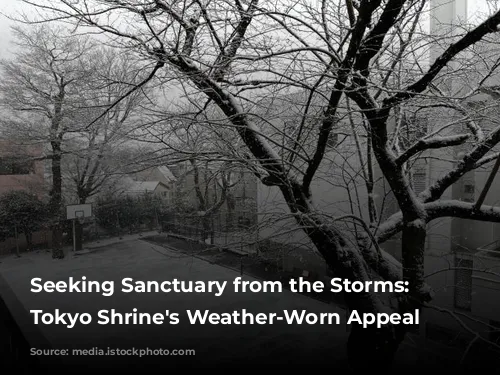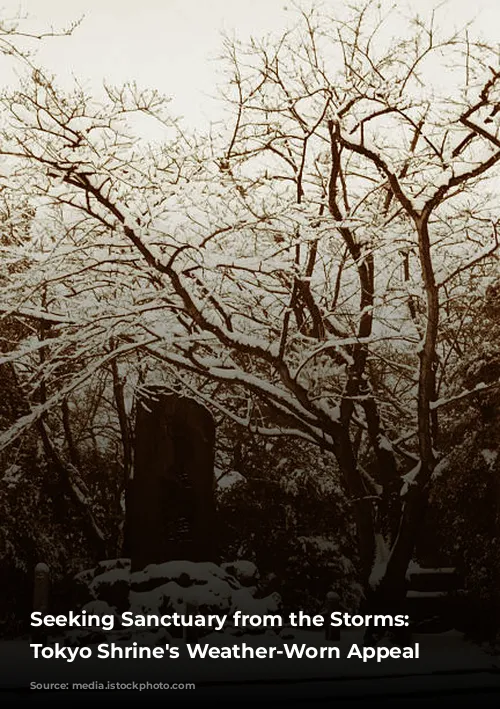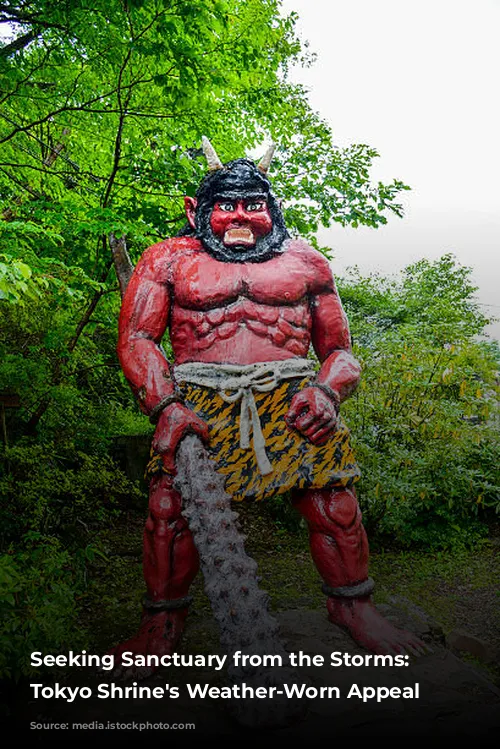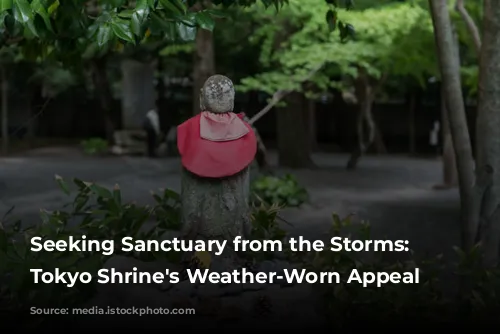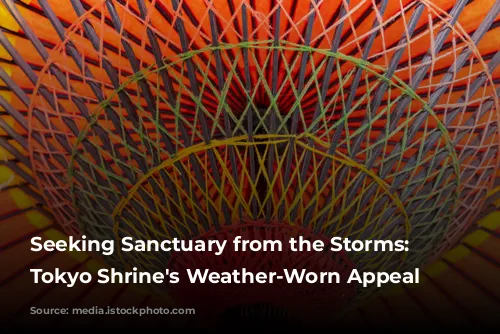The Kisho Jinja shrine in Tokyo has become a haven for those seeking solace from the increasingly erratic weather patterns plaguing Japan. Amidst the vibrant energy of Koenji, a neighborhood known for its bohemian spirit and lively music scene, this unique shrine, dedicated solely to weather, draws in a growing number of worshippers. With each passing year, the shrine’s allure intensifies as climate change’s tangible effects grip the nation.
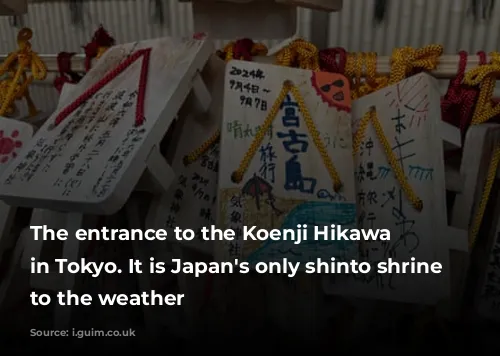
Prayers for a Stable Climate
The shrine’s popularity is evident in the constant stream of visitors seeking refuge from the sweltering summers and destructive typhoons that have become increasingly common. “In Japan, we used to have four distinct seasons, but now it’s just two: midsummer and midwinter,” laments Yoichi Yamada, a parishioner. “I’m worried about flooding and other effects of climate change.”
Echoing Yamada’s concerns, Shota Suzuki, another visitor, expresses anxieties about the intensity of summer heat and its impact on food crops. “Summers are becoming more intense, and the heat is affecting food crops,” he states. These concerns are not merely anecdotal; they are rooted in the stark realities of a changing climate.
This shift in climate has ushered in a new wave of devotees to the Kisho Jinja shrine. Daishin Kontani, a priest and certified weather forecaster, confirms this observation. “In the past few years, the number of worshippers concerned about the climate crisis and praying for stable weather has increased,” Kontani notes. He attributes this surge to the increasingly frequent and severe floods and landslides plaguing Japan. “I believe that more worshippers are praying for things to calm down a little, and that they will come to the shrine to worship.”
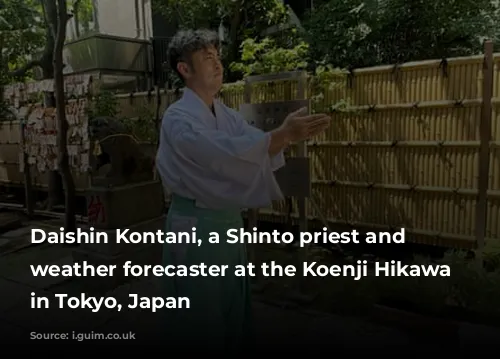
A Sanctuary of Hope in a World of Unstable Weather
The shrine, nestled within the grounds of the Koenji Hikawa shrine, is a testament to Japan’s deeply rooted reverence for nature and the forces that govern it. The Kisho Jinja’s origins can be traced back to World War II, when the Imperial Japanese Army established a weather research unit, seeking to improve military forecasting strategies.
The shrine’s connection to the military is deeply interwoven with its dedication to a particular deity, Yagokoro Omoikaneno Mikoto, who is believed to control various meteorological phenomena. Many visitors leave their wishes for fair weather on wooden votive tablets known as ema.
The shrine’s appeal extends beyond individual anxieties about personal well-being. Businesses ranging from air conditioner manufacturers and fireworks organizers to race tracks and baseball teams also seek the deity’s blessings for favorable weather conditions.
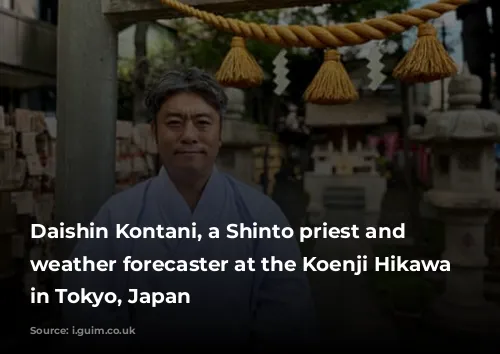
A Collective Plea for Weather Stability
Beyond personal and commercial interests, the shrine embodies a collective yearning for weather stability. Parishioners express their heartfelt prayers for mitigation of disasters and hope for a future where agricultural yields are not compromised by extreme heat and heavy rains.
Koenji Hikawa, with its Kisho Jinja shrine, becomes a symbol of collective hope in the face of a changing climate. It serves as a poignant reminder of the profound impact that weather has on our lives and the need for collective action to address the challenges posed by a rapidly changing world.
The shrine stands as a testament to the enduring power of faith and the resilience of human spirit in the face of adversity. It underscores the need to find harmony with nature and to strive for a future where weather patterns are no longer a source of fear, but a reminder of our interconnectedness with the world around us.
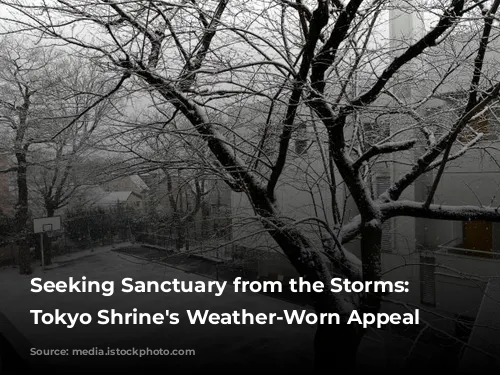
A Call for Collaborative Action
Beyond the spiritual solace offered by the Kisho Jinja shrine, there is a growing awareness of the need for tangible action. Mikako Matsui, the head priest at Koenji Hikawa, aptly summarizes this sentiment, emphasizing that while climate change is a result of human activities, it also presents an opportunity for collective action. “Summers have become so hot in Japan that we can no longer do some things we used to do, and it can negatively affect people’s health,” she emphasizes. “As climate change is the result of human activities, it’s incumbent on us to work together to do something about it using human knowledge.”
The Kisho Jinja shrine, with its unique dedication to weather, stands as a powerful symbol of the human spirit’s yearning for harmony with nature. It is a reminder that we are not merely observers of weather but active participants in shaping the climate of our planet. The shrine encourages us to embrace a collective responsibility towards mitigating climate change and securing a future where the beauty of nature continues to inspire and sustain us.
